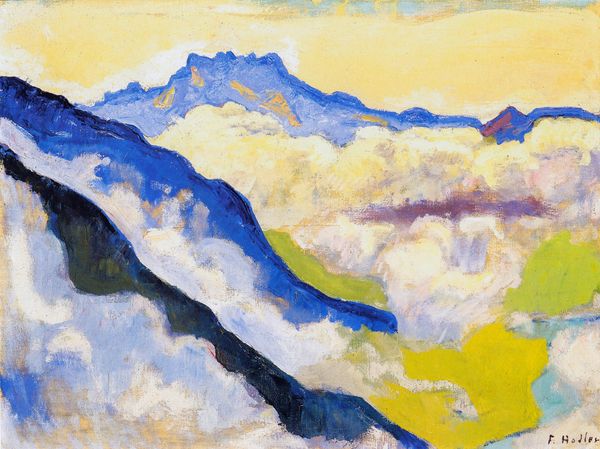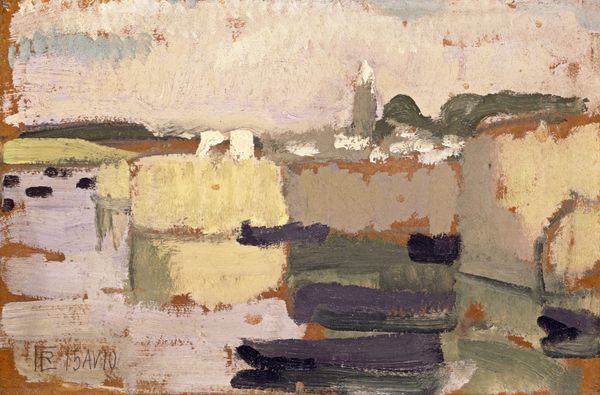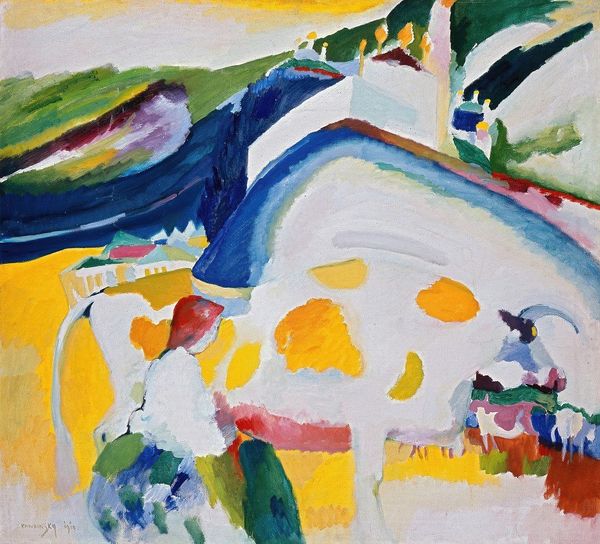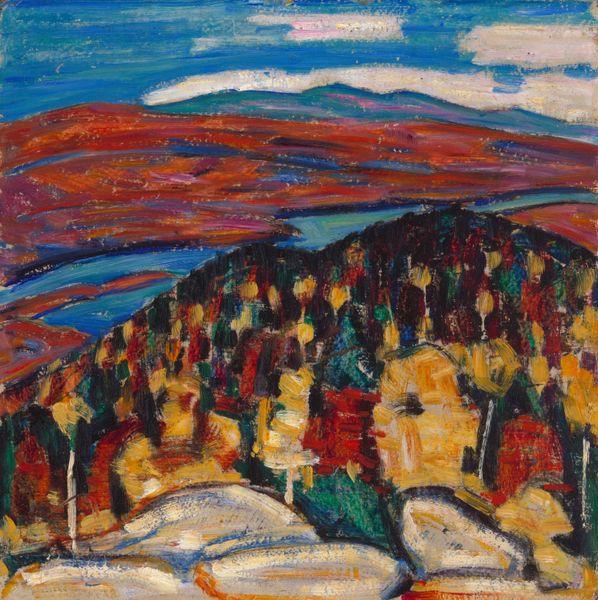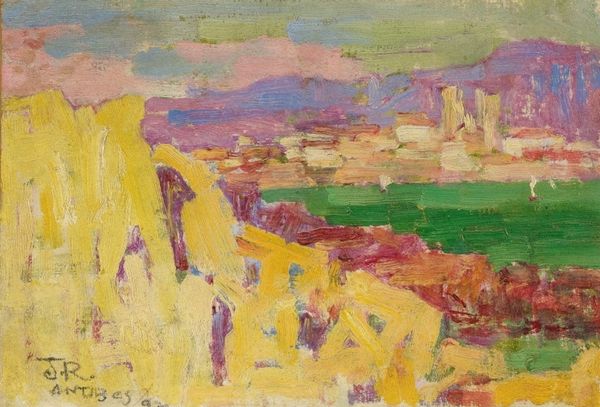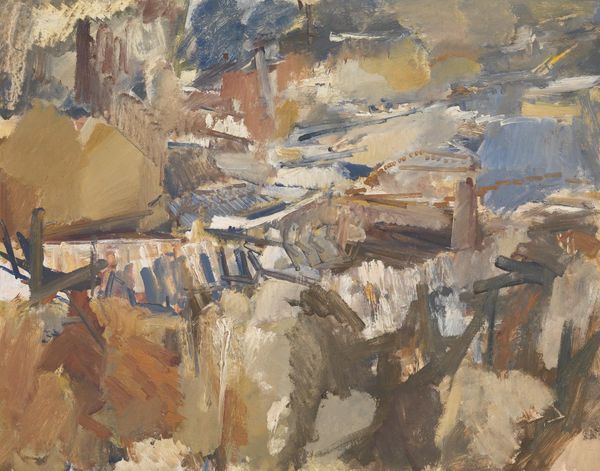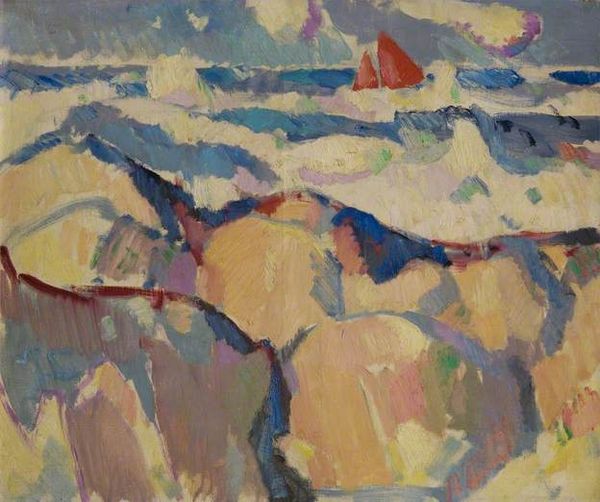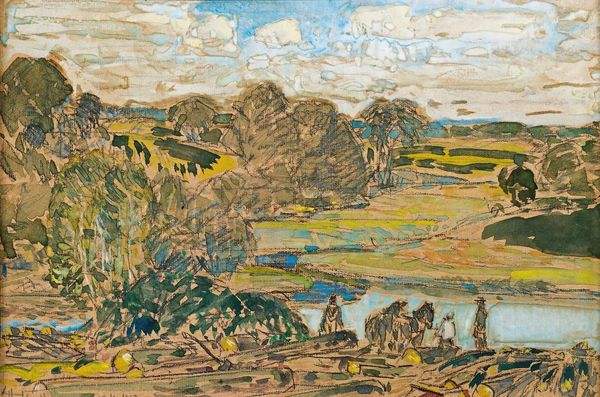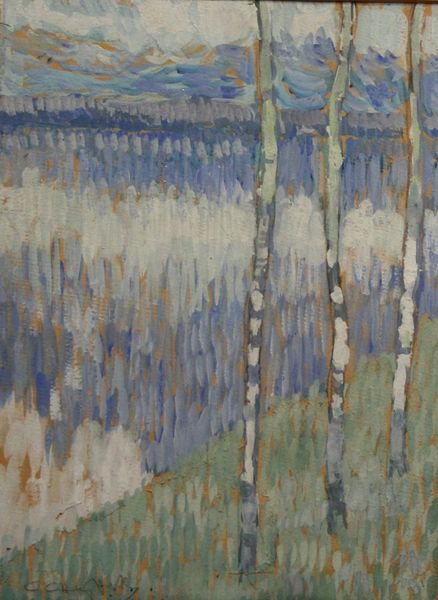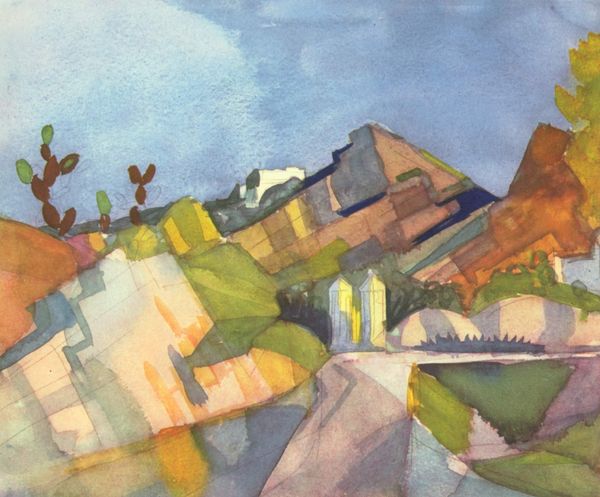
Copyright: Hryhorii Havrylenko,Fair Use
Curator: Welcome. We’re looking at Hryhorii Havrylenko’s 1983 acrylic on canvas titled “Sedniv,” which is currently held in a private collection. Editor: Well, it’s certainly… intense. That insistent yellow sky weighs heavily, almost pressing down on the abstracted forms below. There’s a compositional tension I find really compelling. Curator: Havrylenko painted this work well into his mature period, reflecting a deep connection to the village of Sedniv, known for its historical significance in Ukrainian culture. The area carries generations of artistic memory. Editor: That tracks. You see the landscape broken down into geometric shapes and blocks of color, yet those oranges and blues somehow manage to feel like light reflecting off dense foliage or stone structures, like visual signifiers that trigger landscape memories. Curator: Absolutely, the symbolism of location here speaks volumes. Sedniv became a place of retreat for artists facing persecution under Soviet rule, so we can perhaps see those solid color planes not only as physical elements, but also symbolic ones related to collective trauma and resilience. Editor: So, in terms of art history, we could contextualize the work using neo-expressionist ideas or Fauvist principles that would lead to a kind of abstraction used to access an almost unutterable psychological experience of trauma and loss. Curator: Exactly, Havrylenko’s brushwork, while seemingly spontaneous, demonstrates control over emotional transmission, echoing both personal and collective experience during a complicated period. It's cultural memory encoded on canvas. Editor: The visual interplay is captivating. Havrylenko pushes the boundaries of representation with those broad, bold strokes, which manage to hint at the enduring spirit of Sedniv while keeping a safe, pictorial, emotional distance from the real experiences of repression, the psychological underbelly. It works. Curator: It is interesting how art manages to work across personal, collective and national frameworks through a potent mix of skill, experience and expression. Editor: I agree completely, the materiality and composition unlock symbolic understanding in the viewer—we find memory through form and colour.
Comments
No comments
Be the first to comment and join the conversation on the ultimate creative platform.
